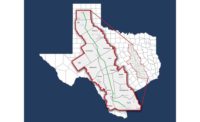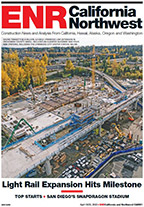California High-Speed Rail Proponents Plow Forward

Jeff Morales, chief executive officer of the California High-Speed Rail Authority, often speaks of how the plan to build the Golden Gate Bridge produced 2,000 lawsuits and descriptions of "an upside-down rat trap."
Recalling these facts "helps us to get through each day as people throw rocks at us," Morales told a public-transit industry conference last year.
Nevertheless, while plenty of naysayers remain, the authority has launched $3-billion worth of construction for its ambitious high-speed-rail program, which will connect northern and Southern California. Projected to cost $68 billion, the effort is seen by critics as Gov. Jerry Brown's (D) bid to burnish his legacy, rather than meet a transportation need.
Project officials beg to differ, pointing out that voters approved $10 billion in bonds for the 520-mile project. "We held hundreds of public hearings, presenting the facts that engineers came up with," says Rod Diridon, chairman emeritus of the authority and emeritus executive director of the Mineta Transportation Institute. "That's what led to the approval of the bonds in 2008. People like the facts."
He adds, "You check one thing: Is this the right thing to do? Once you get a yes in your own mind, you put your head down and you charge. You get delayed, you get blocked, you get more costs than you thought, slightly different routes than you thought, [but] you get it done."
In an interview with the Christian Science Monitor, Pepperdine University professor of public policy Michael Shires questioned the capacity need for the project, citing talk of closing two regional airports in Southern California.
But at a US High Speed Rail Association meeting last December, Morales told participants that six of the nation's 30 most congested urban areas are in California. He said that space-constrained San Francisco airport was calling high-speed rail a "third runway." Noting California's notorious automobile traffic, he added that the system will be the equivalent of 4,300 new lane-miles.
Moreover, the planned construction will create 20,000 jobs over five years for the Central Valley, which has a 25% to 35% unemployment rate, Morales said.
Robbie Hunter, president of the State Building & Construction Trades Council of California, cited the same job-creation figure last month in an interview with LaborPress magazine. He added, "This has been a political war. The California building trades have been the foot soldiers for this project. We've shown up at hundreds of hearings. We've spent our resources, our time and our political capital by getting the necessary votes at every stage of the political fight."
Bonnie Lowenthal, former representative of the 70th state Assembly district and a champion of the San Francisco-Oakland Bay Bridge, says she suggested the high-speed-rail authority's audit committee begin holding open hearings, which it did. "We want people to build and think big and innovate, but they also have to be open and transparent—that includes being open and honest when there's a mistake," she says.




